Old Town Panamá Casco Viejo. The historic district of Panamá City is known as Casco Viejo (Spanish for Old Quarter). This section of Panamá City was built by the Spanish colonists in 1673 after the near-total destruction of the original Panamá City in 1671. The new city was built on a peninsula completely isolated by the sea. A defensive system of walls was also created.

Old Town Panamá Casco Viejo
It was designated a World Heritage Site by UNESCO in 1997. After experiencing decades of neglect, beginning around the 1950s, it is now in the process of being restored.
Walking along the old cobblestone streets I couldn’t help but be reminded of New Orleans. As the French attempted to build a canal, to connect the Atlantic and Pacific oceans, beginning in the late 1800’s it makes sense that there would be a French influence.
Many of the residential areas are simply charming.
As with most large cities, you will find offices, restaurants and private residences all on the same street.
Iglesia San Francisco de Asis
Iglesia San Francisco de Asis is one of the smallest, but most ornate, churches in Casco Viejo. It is located on the Plaza Bolivar. This church was ravaged by fire in 1737, and again in 1756, but was restored in 1998.
Next, to the church, Salón Bolívar is part of the beautifully renovated colonial building Palacio Bolivar on the Plaza. It now serves as Panama’s Foreign Ministry offices. The Salón houses a small museum about Panama’s political history.
Simon Bolivar Plaza has a monument to Venezuelan general Simon Bolivar (known as the “Liberator of Latin America) as well as some lovely outdoor cafes…
…and happy ice cream vendors.
There are numerous plazas or squares within the city just like in Paris.
The Main Square
The original main square of the walled city was Plaza Francia which was designed by Leonardo de Villanueva. It is dedicated to the French effort to build the Panama Canal and to the thousands of people from around the world who died during the process. (Most lost their lives to yellow fever or malaria because it was not known at the time that the mosquito was the transmitter.) An obelisk topped with a French coque (rooster) on the monument and a dozen marble plaques provides details of the labor construction on the Canal.
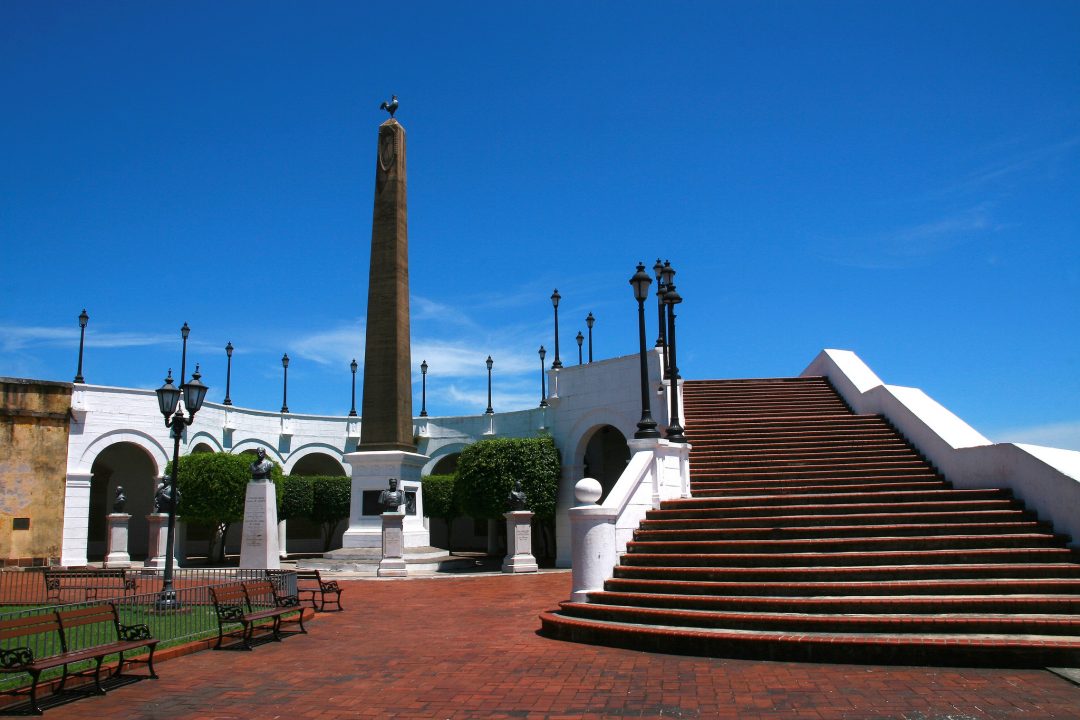
To the left of the monument is a city garden.
The Kuna Indians
To the right is a waterfront promenade named the Paseo Esteban Huertas. There is a great view of the Puente de las Americas (Bridge of the Americas), the Amador Causeway and all the ships lining up to enter the canal.
You will also find local vendors selling traditional Panamanian gifts.
The most popular items are probably the mola’s made by the Kuna Indians. Traditionally Kuna women wear the mola’s on the front and back of their blouses.
But the colorful designs can also be used on bags, pillows, quilts or hung as artwork. They feature geometrical patterns as well as abstract designs of flowers, sea animals, birds and reptiles.
Walking the streets of Casco Viejo I took delight in all the lovely colors and architectural details.
There are areas of the city which you can see true poverty. However, we did not feel unsafe as we stayed on the main walkways which are patrolled by guards.
But some of the buildings that have yet to be renovated posess a form of rustic beauty.
It is evident that a proud artist lives here.
There is of course graffiti but one might say there is artistry in that as well.
Iglesia de la Compania de Jesús
Some of the areas of Casco Viejo will perhaps remain as is. These are the ruins of the church and convent of The Iglesia de la Compania de Jesús (Church of the Company of Jesus). The church and its surrounding buildings were constructed around 1741 to accommodate a school and were later turned into a university. The church was destroyed by a fire in 1781 and further damage was done by an earthquake in 1882.
While the fire burned all the woodwork the flat stone arch somehow survived the earthquake. The lasting construction of the arch has baffled numerous architects for many years. It spans a space of 50 feet and is 35 feet high at the crown.
Overall, Casco Viejo is a can’t miss destinaton if you are traveling to Panamá.
Tenga un excelente dia!
Laura

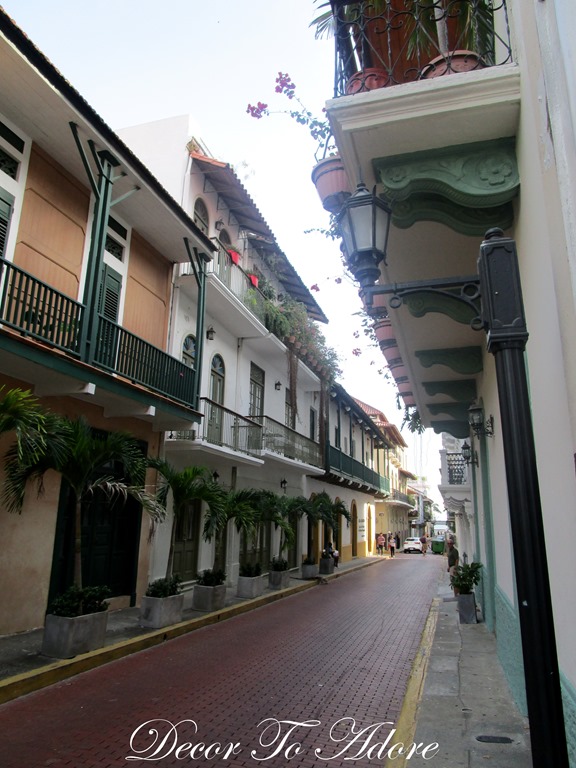
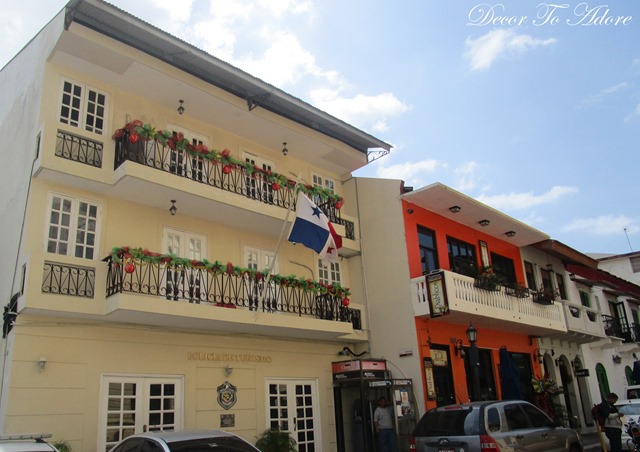
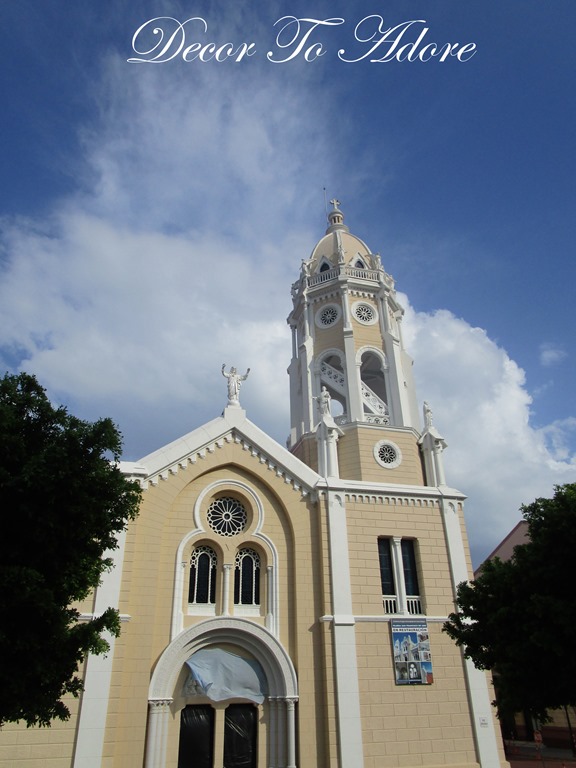
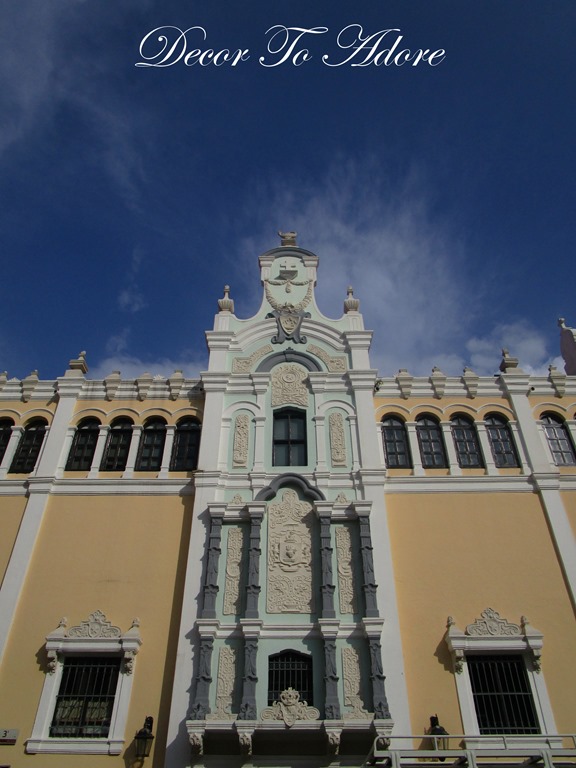
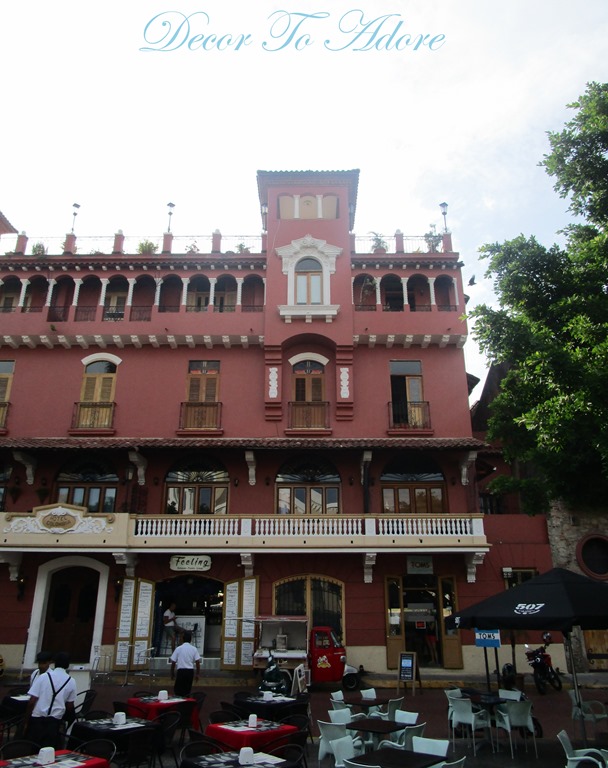
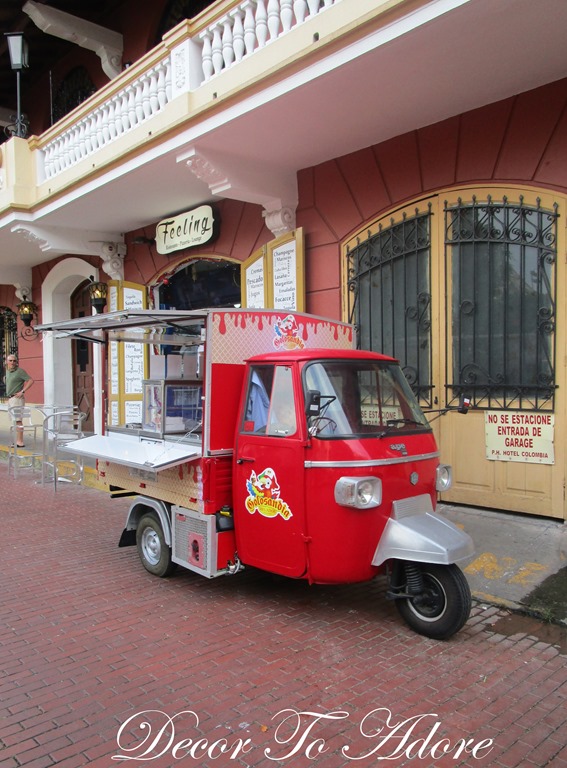

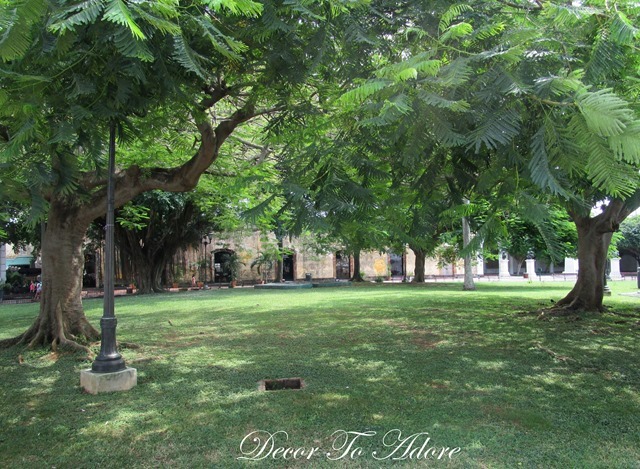
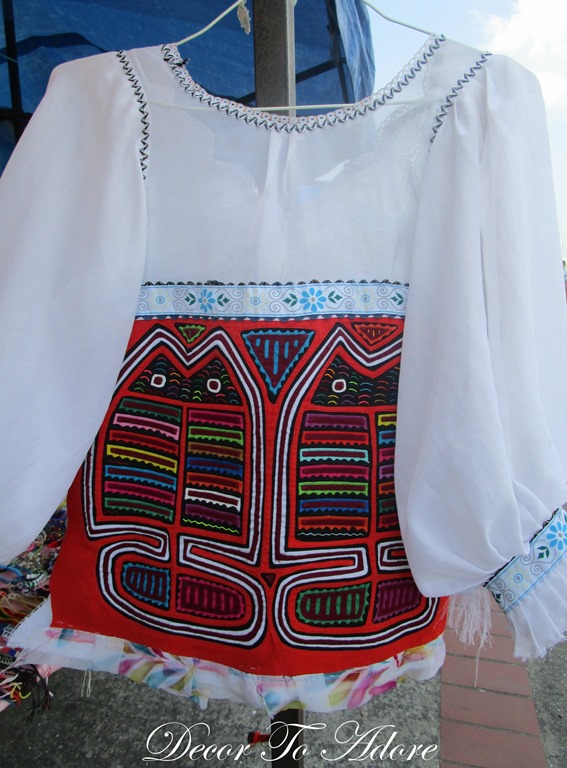
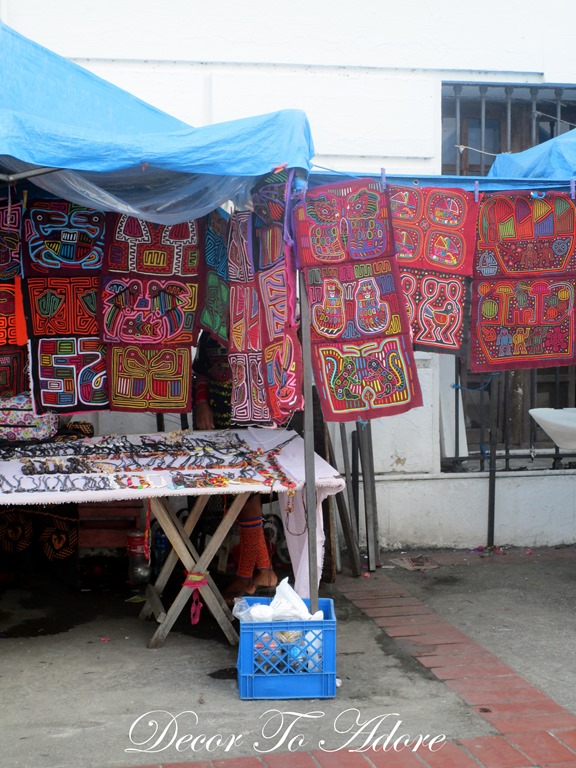
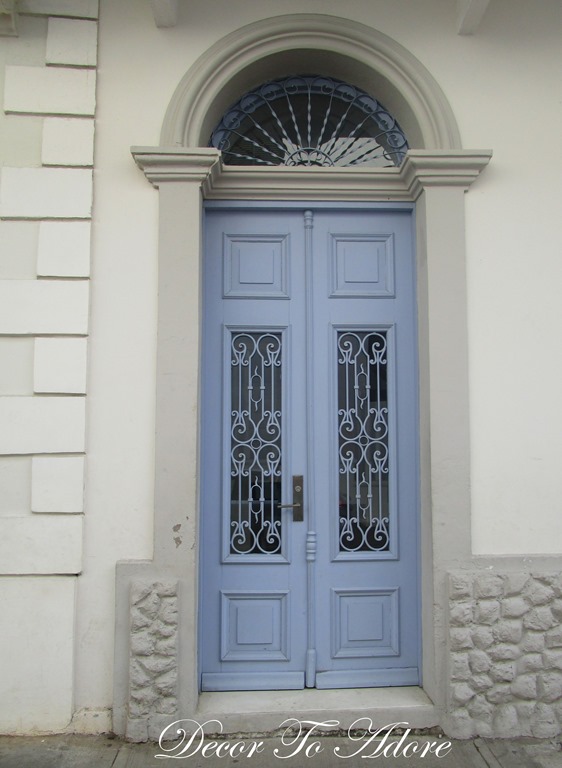
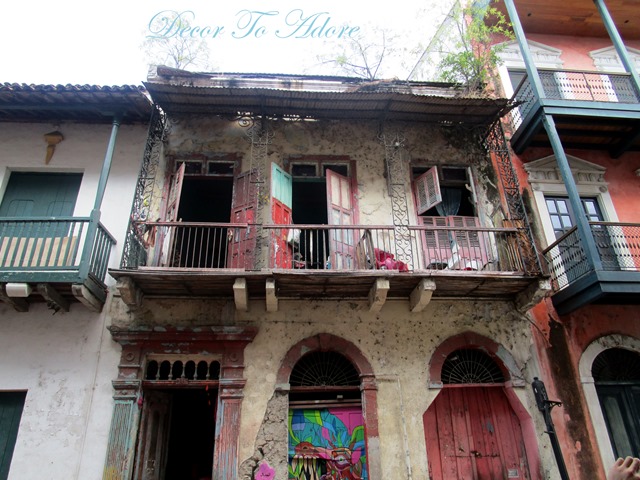
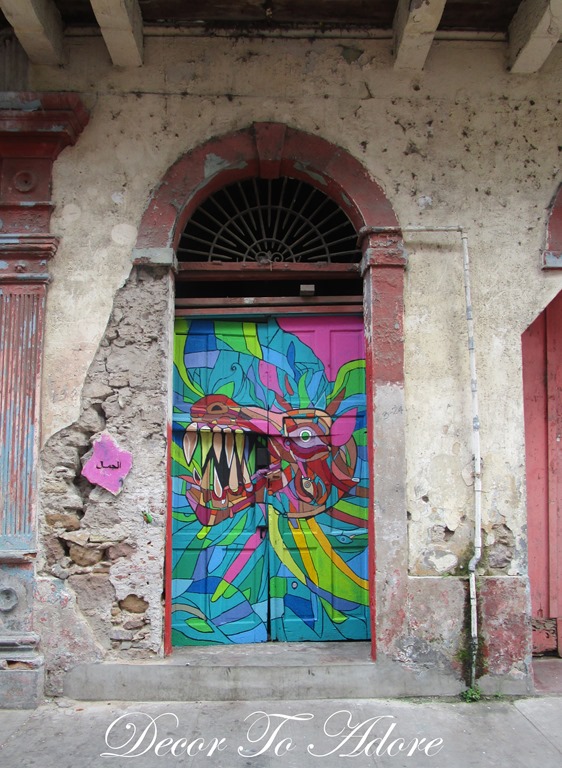

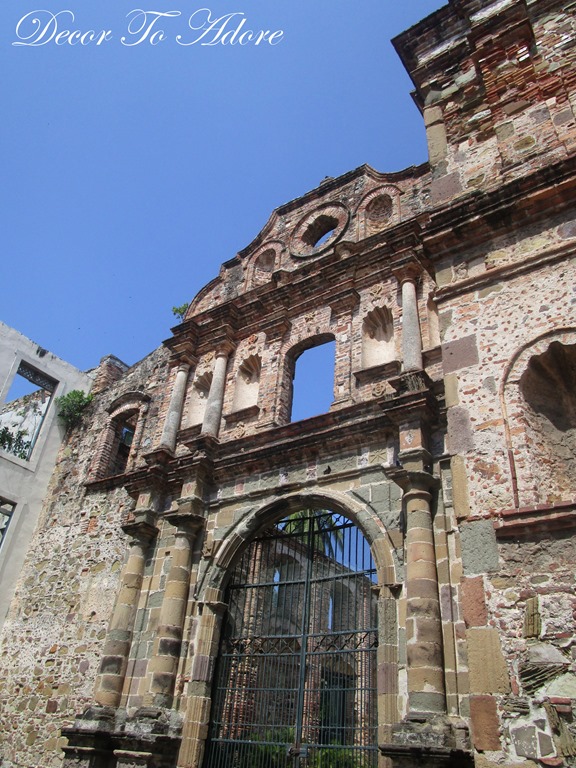
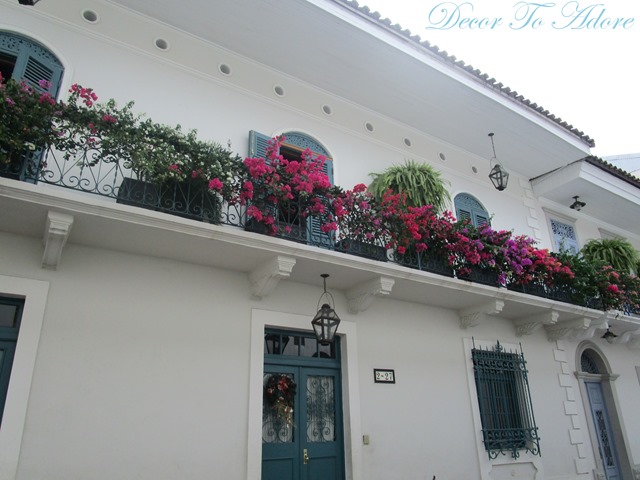
You always include such fabulous history and details about the different places you visit. I am loving this series and the pictures are totally amazing.
Doesn't it make you want to grab some paints and try to reproduce the gorgeous colors and details. The ironwork is amazing, too!
I can see why you choose Panamá City to visit! The colors, the culture, and the beauty of it is wonderful.
Your pictures took me on a mini vacation, too.
What a great place to learn and visit.
What an adventure. I love traveling to places that are “worlds away” from my everyday life. Your picture tour makes me feel like I'm walking down the street, ice-cream in hand to admire the architecture and vivid colors.
absolutely beautiful
How do you like that? You took us on another mini vacation 🙂 I especially enjoyed seeing the art of and on the buildings…gorgeous colors!
What a beautiful place! The colors and the light are just wonderful.
Thanks so much for sharing such a beautiful post, I loved the tour!
Happy New Year,
Miz Helen
Wonderful photos! Looks like a great trip. The weather looked perfect, too.
I haven't seen a post on Panama City. Glad you shared. It is beautiful good to learn some history. You do that well.
How beautiful… love everything about that town….
cielo
Thank you for sharing all that wonderful trip with us.